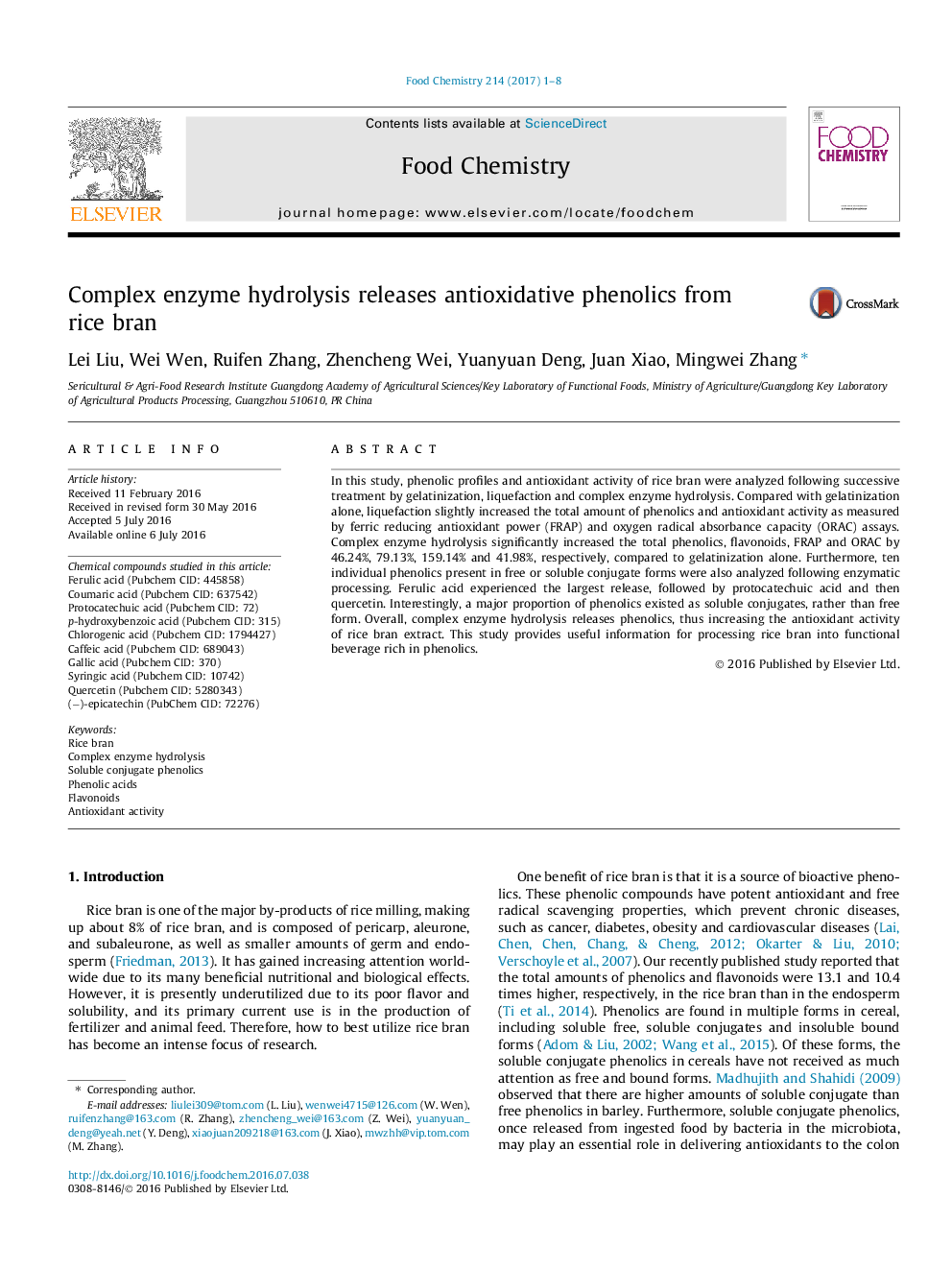| Article ID | Journal | Published Year | Pages | File Type |
|---|---|---|---|---|
| 7586863 | Food Chemistry | 2017 | 8 Pages |
Abstract
In this study, phenolic profiles and antioxidant activity of rice bran were analyzed following successive treatment by gelatinization, liquefaction and complex enzyme hydrolysis. Compared with gelatinization alone, liquefaction slightly increased the total amount of phenolics and antioxidant activity as measured by ferric reducing antioxidant power (FRAP) and oxygen radical absorbance capacity (ORAC) assays. Complex enzyme hydrolysis significantly increased the total phenolics, flavonoids, FRAP and ORAC by 46.24%, 79.13%, 159.14% and 41.98%, respectively, compared to gelatinization alone. Furthermore, ten individual phenolics present in free or soluble conjugate forms were also analyzed following enzymatic processing. Ferulic acid experienced the largest release, followed by protocatechuic acid and then quercetin. Interestingly, a major proportion of phenolics existed as soluble conjugates, rather than free form. Overall, complex enzyme hydrolysis releases phenolics, thus increasing the antioxidant activity of rice bran extract. This study provides useful information for processing rice bran into functional beverage rich in phenolics.
Keywords
Quercetin (PubChem CID: 5280343)Coumaric acid (Pubchem CID: 637542)(−)-Epicatechin (PubChem CID: 72276)Protocatechuic acid (PubChem CID: 72)Syringic acid (PubChem CID: 10742)Ferulic acid (PubChem CID: 445858)Caffeic acid (PubChem CID: 689043)Chlorogenic acid (PubChem CID: 1794427)Gallic acid (PubChem CID: 370)Phenolic acidsRice branAntioxidant activityFlavonoids
Related Topics
Physical Sciences and Engineering
Chemistry
Analytical Chemistry
Authors
Lei Liu, Wei Wen, Ruifen Zhang, Zhencheng Wei, Yuanyuan Deng, Juan Xiao, Mingwei Zhang,
